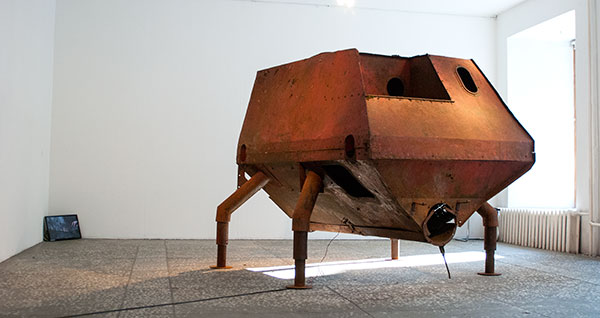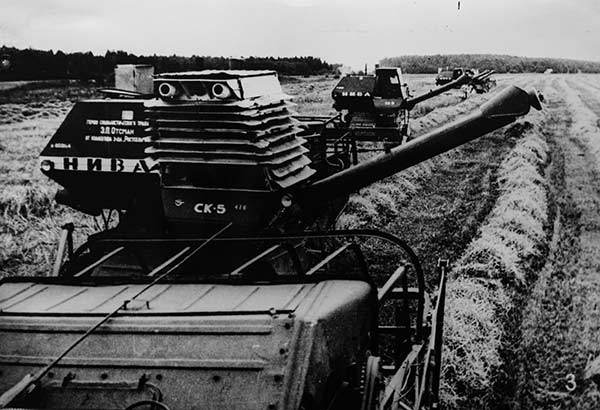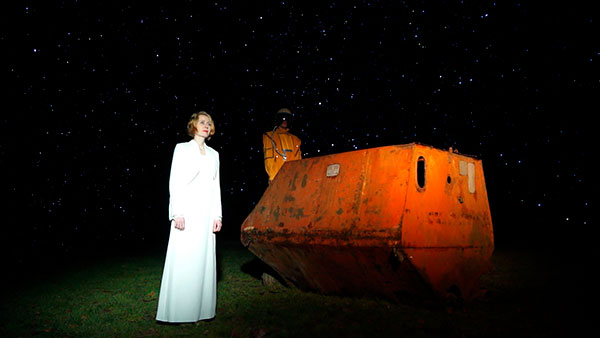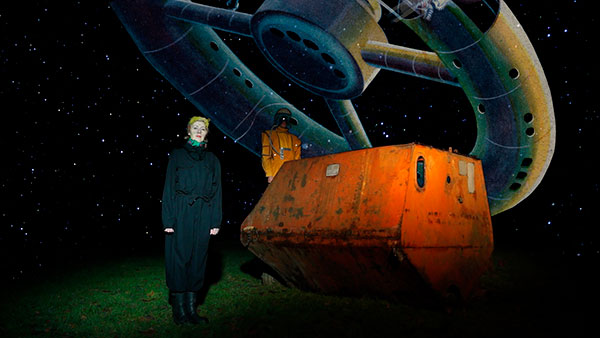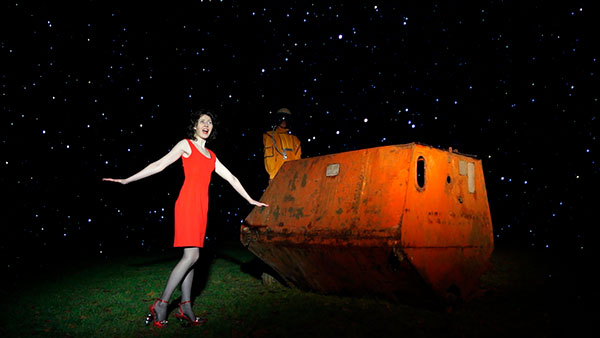In order to explore the question, what it feels like to be a female hero, I brought the harvester bunker to the Tallinn City Gallery. It belongs to Elmina Otsman, the first Estonian female combine harvester operator and a Hero of Socialist Labour. With the help of videos, sound and texts the viewers were invited to travel through the time to explore the acknowledged and expected female roles in our society.
The grain bunker and the video "Stones" in Tallinn City Gallery (2016)
"The orange Niva stood near the workshop. A large number of people had gathered around it and the kolkhoz’s small orchestra was playing. When the instruments fell silent, Ivan Voitov, the deputy head designer at the Rostselmash factory stepped forward and made a short speech. He congratulated all the women at the farm on the occasion of March 8th, and then he congratulated me on behalf of the entire collective at his large enterprise. The Niva was right there. There can be no better present for the Women’s Day," Elmina Otsman (1924—2012) wrote in her diary when she was given a harvester bearing her name.
The combine harvester Niva working in 1970s. E. Otsman's name is written on the bunker (above left) in cyrillic. Photocopy by Fideelia
As a central image of the exhibition I present a subjective interpretation of the named harvester's grain bunker. The bunker is like a time machine, which takes us back to the era when the battle for grain was a matter of honour, when rocks were gathered from the field by bare hands, and the labour heroes and cosmonauts had lofty life goals. An eloquent connection between the past and the present is comprised of the excerpts from Elmina’s diary, which are read by actress Tiina Tauraite, who has studied farming and rode a tractor throughout Estonia.
Still image from the video "Stones" (2016)
Kivid /Stones from Fideelia-Signe Roots on Vimeo. Endless loop (2016)
I am executing a creative research on the topic “Woman as a Hero” for my PhD at the Estonian Academy of Arts. In the focus of the exhibition are the Soviet-era women who worked with the farm equipment, and were recognised with the title of “Hero of Socialist Labour”. From the mythical image of a heroine, I have now arrived at a microhistorical position, and researching the case of Elmina Otsman, the 1st Estonian female harvester operator and a hero of labour. I am examining how a heroine is constructed, how she sees herself; what is important to her and how is she affected by her biological and social gender and the environment. Historically, the role of a hero has by default belonged to men. Women may not seem as convincing in the same role and have been seen more as victims. Should a specific hero image be invented for the women?
Still images from the video "Four Female Roles With the Harvester Bunker" (2016)
Video "Four Female Roles With the Harvester Bunker" (2016, 00:01:03)
The most surprising find of the research topic is that many of the Soviet-era female tractor- and harvester drivers are still alive organising annual national gatherings. Female tractor driver is forgotten by general public and there is a hint of hostility and ridiculing towards this social group. Upon the collapse of the Soviet Union, the new discourse buried the old one, causing the change in female image which became from the active labour heroines to the passive models and entertainers. People who had been working hard were made to feel as if they had been contributing to the occupying power and thus they deserve nothing but despise. The topic deserves to be examined in order to make a contribution to the women's history. E. Otsman’s diaries provide invaluable material for the researcher.
Changing of the woman's role based on the womens' magazine "Soviet Woman" (2016)
